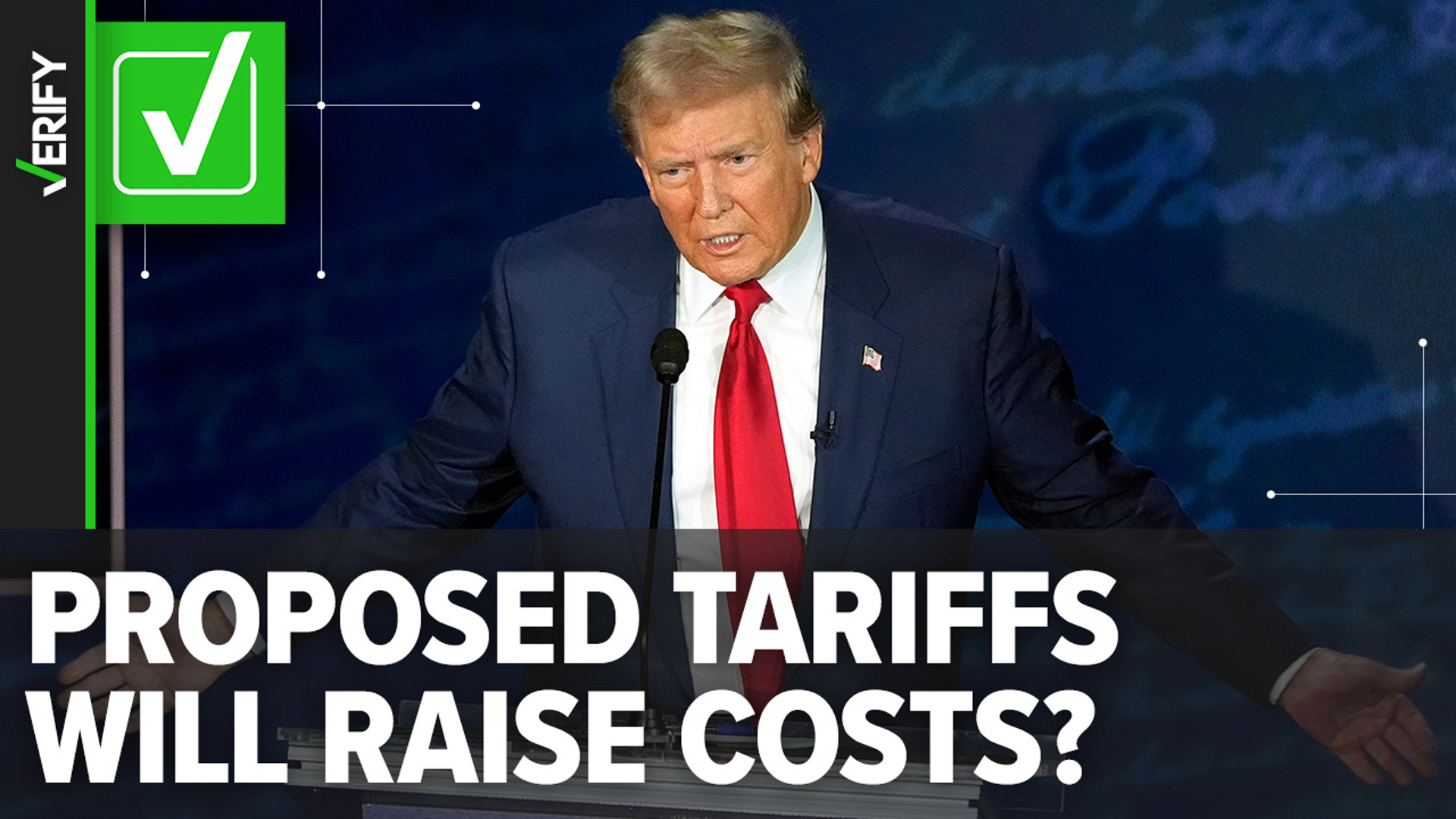The Ripple Effect: Trump Tariffs And The Future Of Indian Solar Exports To Southeast Asia

Table of Contents
The Impact of Trump-era Solar Tariffs on Indian Manufacturers
The Trump administration imposed tariffs on imported solar cells and modules, primarily targeting Chinese producers who dominated the global market. While seemingly aimed at China, these tariffs indirectly impacted Indian solar companies. The increased cost of competing with subsidized Chinese manufacturers, and the uncertainty caused by trade wars, created significant challenges for Indian exporters. The tariffs disrupted established supply chains and increased price pressures.
- Increased production costs: Indian manufacturers often rely on imported components, making them vulnerable to fluctuating global prices and tariffs.
- Loss of market share: The competitive landscape shifted, making it harder for Indian companies to compete against other players who may have been less affected by the tariffs.
- Challenges in securing financing and investments: The uncertainty created by the trade war made it difficult for Indian solar companies to secure the necessary funding for expansion and growth. Investors were hesitant to commit capital in a volatile market.
Southeast Asia's Growing Solar Energy Market and its Reliance on Imports
Southeast Asia is experiencing explosive growth in its solar energy sector. Countries like Vietnam, Thailand, the Philippines, and Indonesia are rapidly expanding their solar power capacity, driven by several factors:
- Rapid increase in solar power installations: The region is witnessing a significant surge in solar energy projects, creating a huge demand for solar equipment.
- Government policies supporting renewable energy development: Many Southeast Asian governments are actively promoting renewable energy adoption through subsidies, tax breaks, and supportive regulations.
- Significant demand for affordable and reliable solar equipment: The cost of solar panels has been steadily decreasing, making solar energy a more attractive and cost-effective option.
This burgeoning market, however, is heavily reliant on imports due to limited domestic manufacturing capabilities. This dependence makes the region particularly susceptible to global supply chain disruptions and price fluctuations.
Analyzing the Shift in Supply Chains Post-Tariffs
The imposition of tariffs forced Indian solar exporters to adapt their strategies. Some successfully capitalized on the reduced Chinese presence in certain markets, while others faced more significant challenges. The landscape was further complicated by the emergence of other global players, including manufacturers from Malaysia and South Korea, who sought to fill the market gap.
- Diversification of supply chains: Indian exporters attempted to mitigate risks by diversifying their sources of components and exploring alternative markets.
- Increased focus on domestic manufacturing and component sourcing: Many Indian companies prioritized boosting domestic production to reduce reliance on imports and improve competitiveness.
- New market entry strategies: Indian companies employed innovative marketing and distribution strategies to gain a foothold in the competitive Southeast Asian market.
The Long-Term Outlook for Indian Solar Exports to Southeast Asia
The future of Indian solar exports to Southeast Asia presents both challenges and opportunities. Continued growth in the Southeast Asian solar market is predicted, but success for Indian manufacturers will depend on several factors:
- Predictions for growth in the Southeast Asian solar market: The region's solar energy capacity is expected to expand significantly in the coming years, offering substantial export potential for Indian companies.
- Opportunities for Indian companies to establish manufacturing bases in Southeast Asia: Setting up manufacturing facilities within the region could help reduce transportation costs, improve logistical efficiency, and respond better to local demands.
- Potential impact of future trade policies and regulations: Future trade agreements and regulations will play a crucial role in shaping the competitive landscape and impacting the flow of Indian solar exports.
Conclusion: The Future of Indian Solar Exports to Southeast Asia
The Trump-era tariffs undeniably impacted the Indian solar industry, creating challenges for its export ambitions. However, the immense potential of the Southeast Asian solar market remains a significant driver for growth. The adaptability and resilience of Indian manufacturers are crucial for navigating this complex landscape. The long-term success of Indian solar exports to Southeast Asia will hinge on strategic diversification, domestic capacity building, and proactive engagement with Southeast Asian governments and businesses. We encourage further research and discussion on this critical topic. Explore resources from organizations like the International Energy Agency (IEA) and the MNRE (Ministry of New and Renewable Energy, India) to gain a deeper understanding of the sector's potential. Let's foster a collaborative environment to unlock the full potential of Indian solar exports to Southeast Asia and contribute to a cleaner, more sustainable future.

Featured Posts
-
 Do Algorithms Contribute To Mass Shooter Radicalization Holding Tech Companies Accountable
May 30, 2025
Do Algorithms Contribute To Mass Shooter Radicalization Holding Tech Companies Accountable
May 30, 2025 -
 Royal Bath And West Show Half Term Show Packs And Exciting Attractions
May 30, 2025
Royal Bath And West Show Half Term Show Packs And Exciting Attractions
May 30, 2025 -
 Kawasaki W800 My 2025 Spesifikasi Dan Harga Terbaru
May 30, 2025
Kawasaki W800 My 2025 Spesifikasi Dan Harga Terbaru
May 30, 2025 -
 Consumer Protection Lawsuit Potential An Analysis Of Ticketmasters Oasis Tour Ticketing Practices
May 30, 2025
Consumer Protection Lawsuit Potential An Analysis Of Ticketmasters Oasis Tour Ticketing Practices
May 30, 2025 -
 Tqyym Atfaqyat Almyah Aljdydt Byn Alardn Wswrya Frs Wrhanat
May 30, 2025
Tqyym Atfaqyat Almyah Aljdydt Byn Alardn Wswrya Frs Wrhanat
May 30, 2025
Latest Posts
-
 Sanofi Investit Dans La Biotech Americaine Dren Bio
May 31, 2025
Sanofi Investit Dans La Biotech Americaine Dren Bio
May 31, 2025 -
 Partenariat Sanofi Dren Bio Un Anticorps Prometteur
May 31, 2025
Partenariat Sanofi Dren Bio Un Anticorps Prometteur
May 31, 2025 -
 L Anticorps De Dren Bio Rejoint Le Portefeuille De Sanofi
May 31, 2025
L Anticorps De Dren Bio Rejoint Le Portefeuille De Sanofi
May 31, 2025 -
 Acquisition Sanofi Dren Bio Et Son Anticorps
May 31, 2025
Acquisition Sanofi Dren Bio Et Son Anticorps
May 31, 2025 -
 Sanofi Rachete Un Anticorps A Dren Bio Le Detail De L Accord
May 31, 2025
Sanofi Rachete Un Anticorps A Dren Bio Le Detail De L Accord
May 31, 2025
